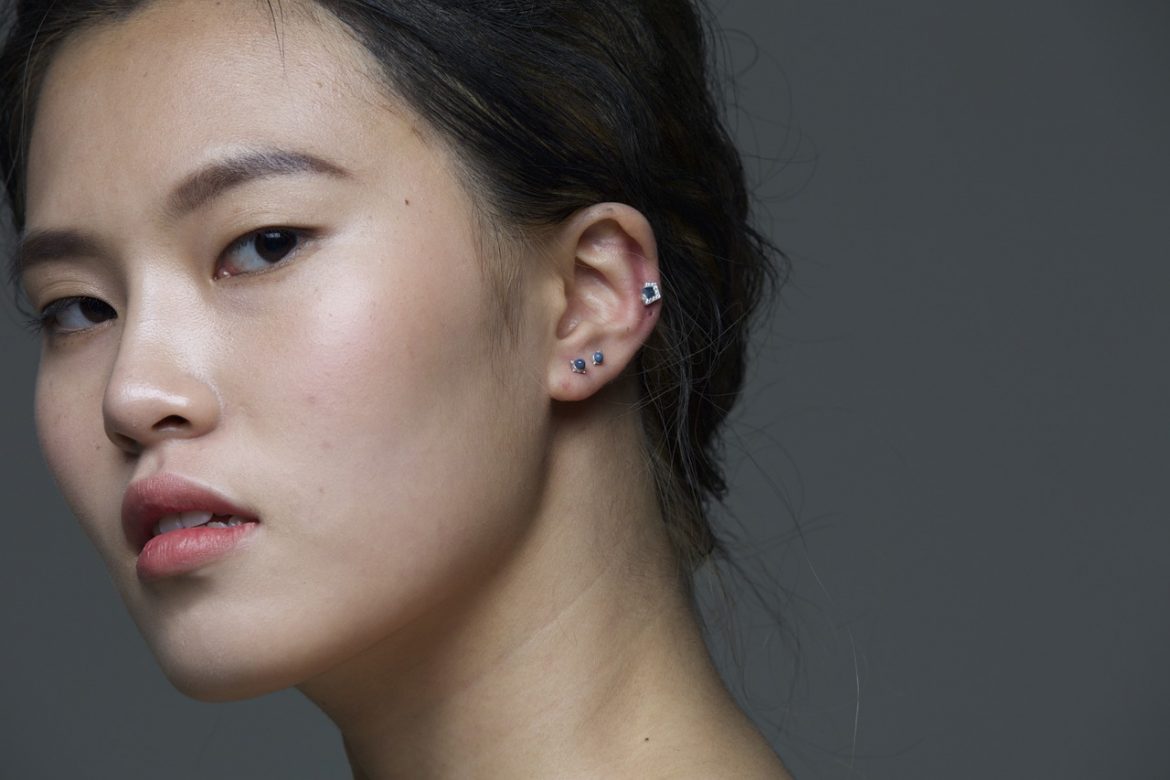There are types of ear piercings so choosing the right one for yourself can be a daunting experience. After all, there are a number of different styles to choose from. Did you know that there’s a type of piercing that supposedly helps with migraines? Choosing an ear-piercing style isn’t just a matter of aesthetics either. You have to consider the pain level and healing time, which does vary from person to person, as well as maintenance. These factor into the final results and how comfortable the whole process would be. So, whether this is your first or your fifth, read on to learn more before you make a decision.
Different Types of Ear Piercings
1. Industrial Piercing
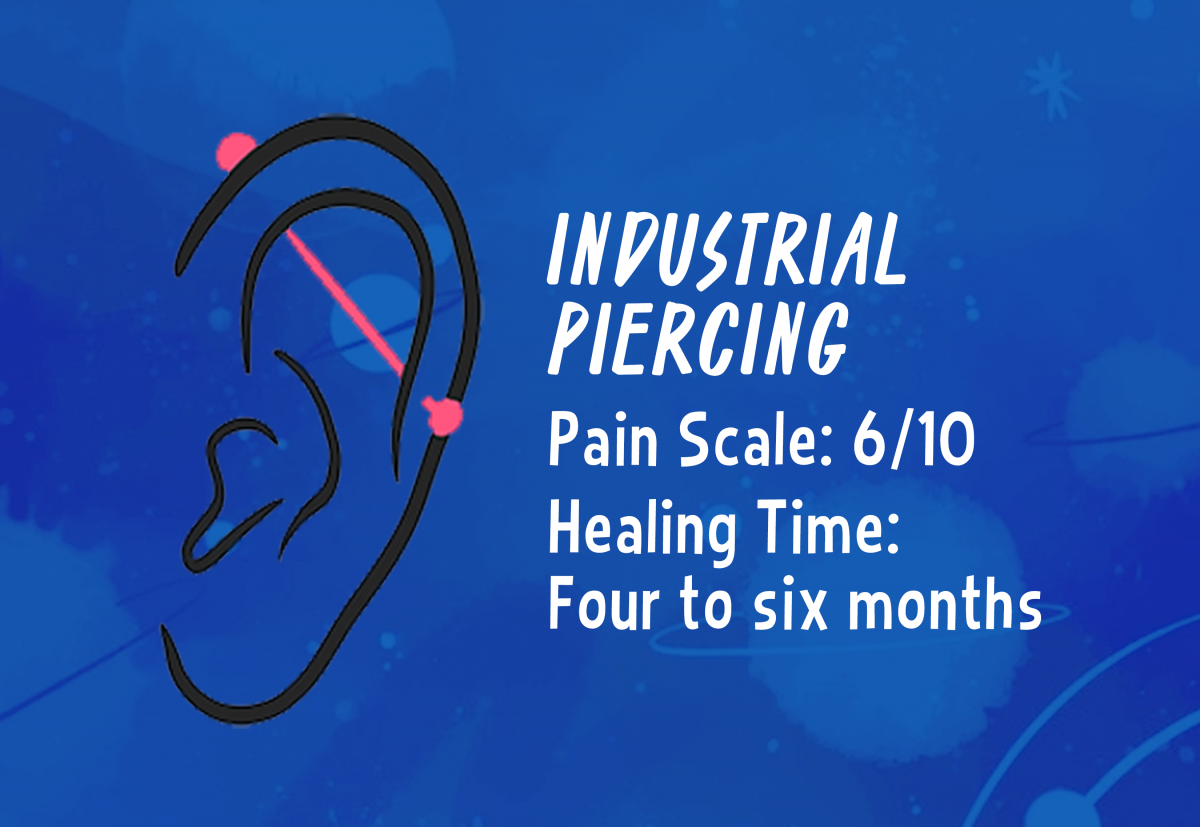

Industrial piercings are some of the most eye-catching because of their placement and the jewelry often used for it. An industrial piercing, also known as scaffolding or bar piercings, is basically two piercings connected by a single earring, which is typically a stainless steel barbell. Of course, you can customize it according to your style. You can go minimal with a plain bar or opt for the Grunge aesthetic and get something really bold. As for placement, professional piercers will tell you that these types of ear piercings are anatomy-dependent. Make sure you consult with them to find what’s suitable for the shape of your ear.
Pain Scale: 6/10 | Healing Time: Four to six months
2. Helix Piercing
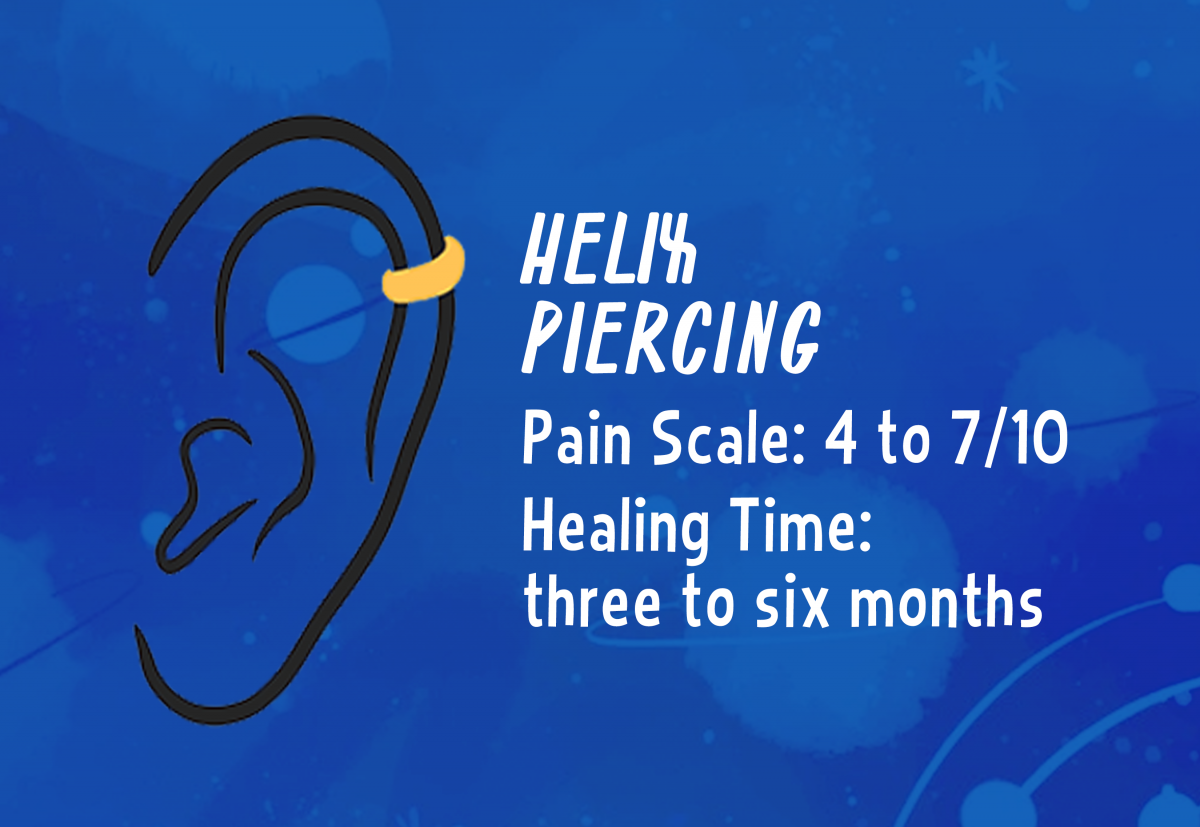

One of the more popular types of ear piercing, even for celebrities, is helix piercing. Also known as a cartilage piercing, this is often done on the upper ear but you can choose how high or low you want it to be. There are also different variations to choose from, including the double helix, triple helix, forward helix, and anti-helix. These differ depending on which part of the ear they are located in. Since they’re quite subtle, helix piercings go well with any type of style.
Pain Scale: 4 to 7/10 | Healing Time: three to six months
3. Snug Piercing
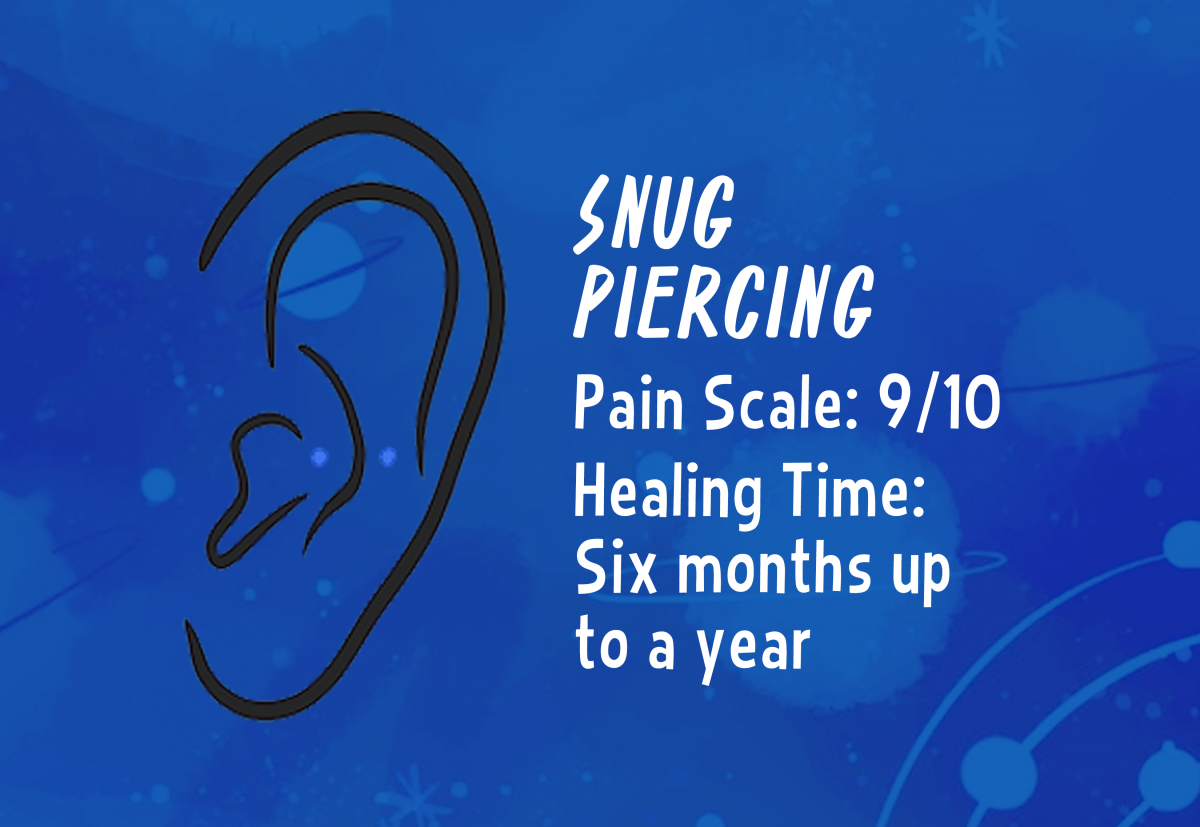

Snug piercings, also known as anti-helix piercings, are known to be one of the most painful cartilage piercings you can get. It may look simple at first glance, but this isn’t quite the case. The snug piercing is located at the top of the anti-tragus and pierces through the anti-helix. The anti-helix is an area between the rim of your ear and its inner cartilage. Note that this isn’t like standard piercings that just about anyone can get. To be able to get this done, your ear shape must be able to accommodate it. This is why consulting with a professional piercer is key to ensuring a safe and comfortable process.
Pain Scale: 9/10 | Healing Time: Six months up to a year
4. Daith Piercing
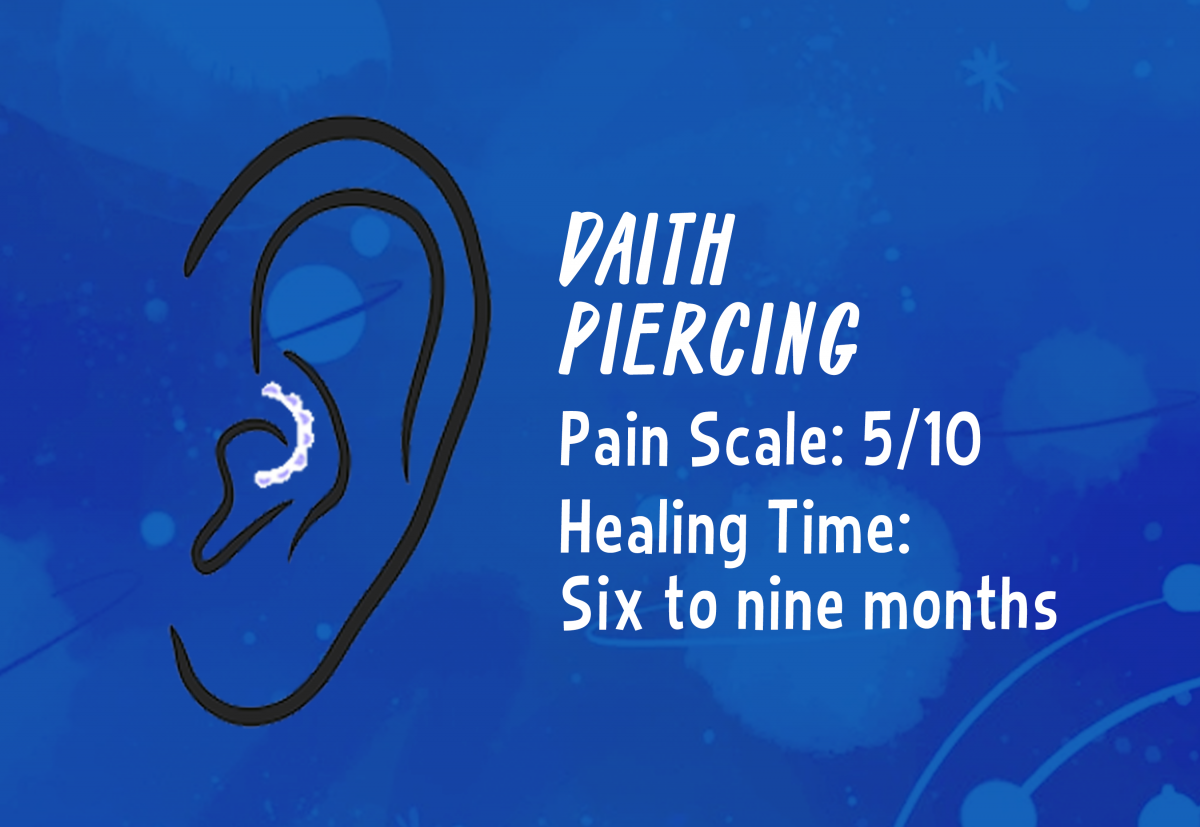

Recently, Daith piercings have gained popularity due to the belief that they can help alleviate migraines. While studies are still being made into it, people who have had it done do say it is effective. This is likely because the area itself is an acupressure point. For those new to these types of ear piercing, the Daith is basically a piercing placed on the cartilage of your inner ear. The most common type of jewelry used for it is hoop earrings, though you can experiment depending on your own style. You’d be glad to know that this aesthetically pleasing piercing suits most ear anatomies.
Pain Scale: 5/10 | Healing Time: Six to nine months
5. Tragus Piercing
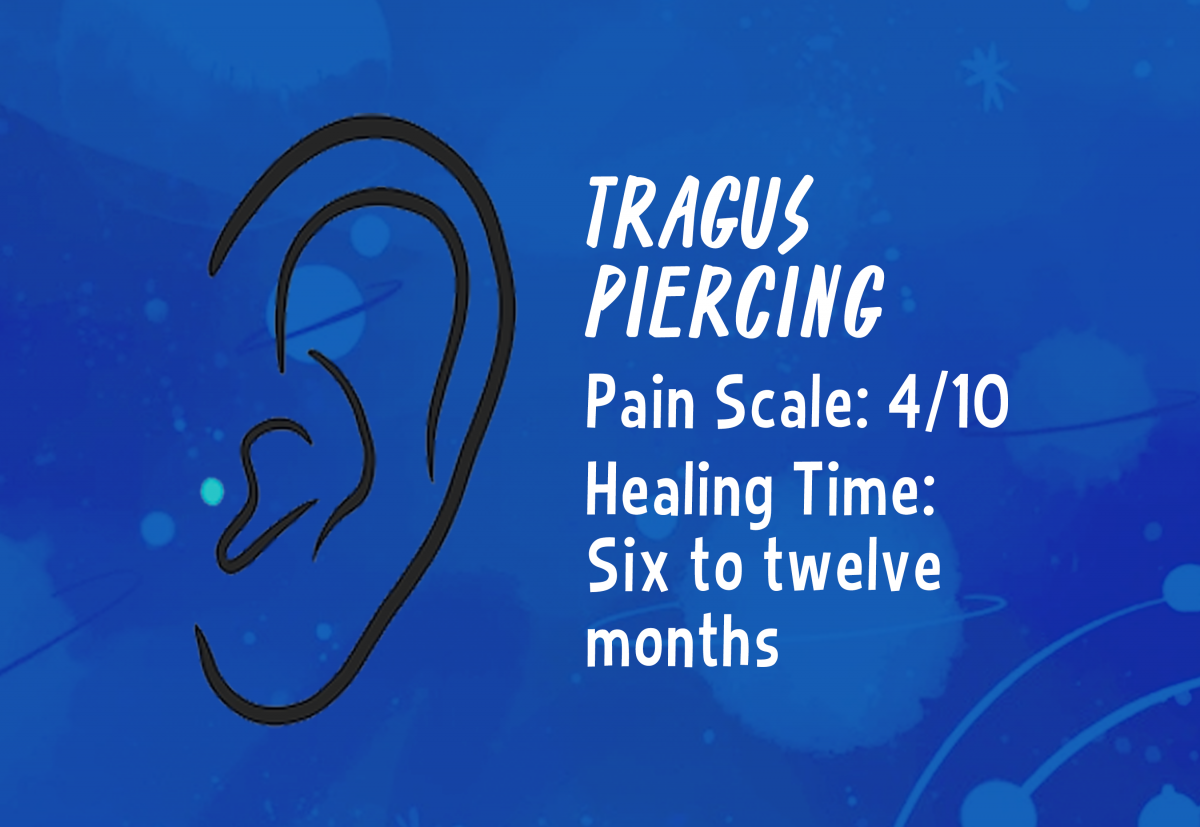

The tragus piercing is equal parts subtle yet eye-catching. It first gained popularity back in the 1980s and still remains one of the go-to ear piercings even for celebrities such as Scarlett Johansson and Rihanna. Tragus piercings are done on a small bit of cartilage that overlaps your ear canal. There’s also a style called surface tragus piercing, which is done in the same area but only pierces the skin. Most piercers wouldn’t recommend this style as there’s a higher probability of the body rejecting the jewelry. Note that this type of cartilage piercing tends to swell more so consult with your piercer about the right kind of earring to use.
Pain Scale: 4/10 | Healing Time: Six to twelve months
6. Lobe Piercing
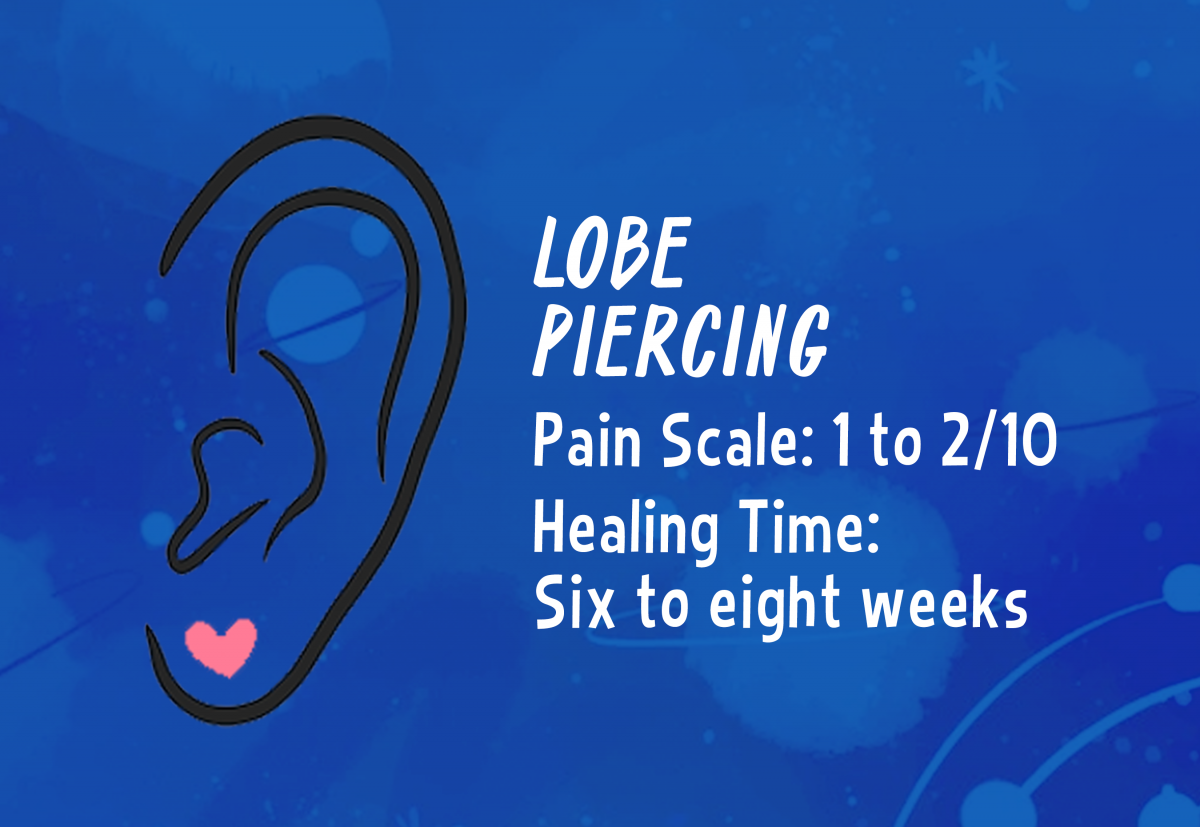

Lobe piercings are some of the most popular styles for both men and women. Despite their simplicity, there are different ways to spice up this fairly common type of piercing. Some people choose to get double or triple lobe piercings, so they can mix and match their jewelry. Because of its simplicity, this will certainly fit the Soft Girl aesthetic well. Lobe piercings are also lowest when it comes to pain scale, though we highly recommend getting it done at a professional piercing studio for your own safety. A professional will use a medical-grade needle instead of a piercing gun as the latter can cause more trauma to your earlobes.
Pain Scale: 1 to 2/10 | Healing Time: Six to eight weeks
7. Transverse Lobe Piercing
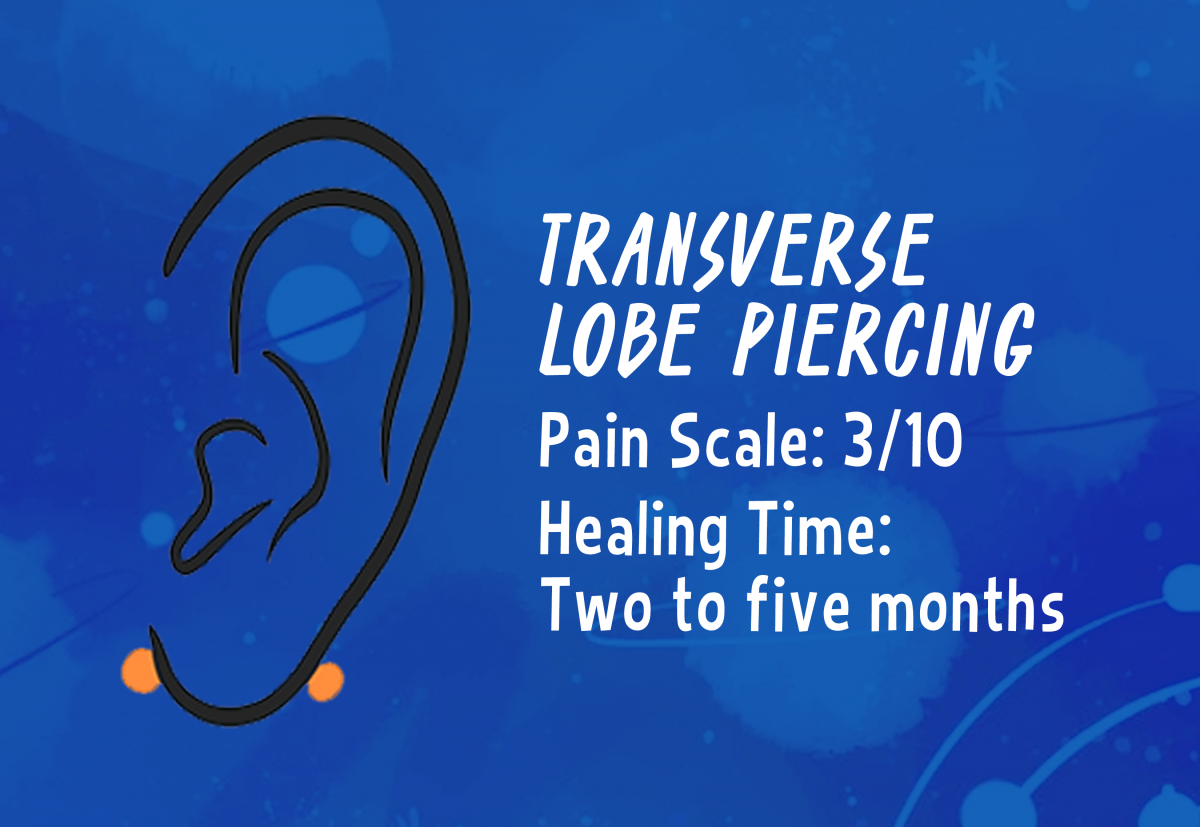

A transverse lobe piercing is comprised of two piercings that are connected by a barbell. This piece of jewelry is threaded through the earlobe from side to side, creating a unique look. Unlike an industrial piercing, the bar part is hidden, making it appear like you are wearing two studs instead of a single piece of jewelry. If you’re looking to get something different without being too bold then this might be the best type of piercing for you. You can also opt to switch out for a different type of earring later on, including one with chains or dangling elements to create a more charming style.
Pain Scale: 3/10 | Healing Time: Two to five months
8. Conch Piercing
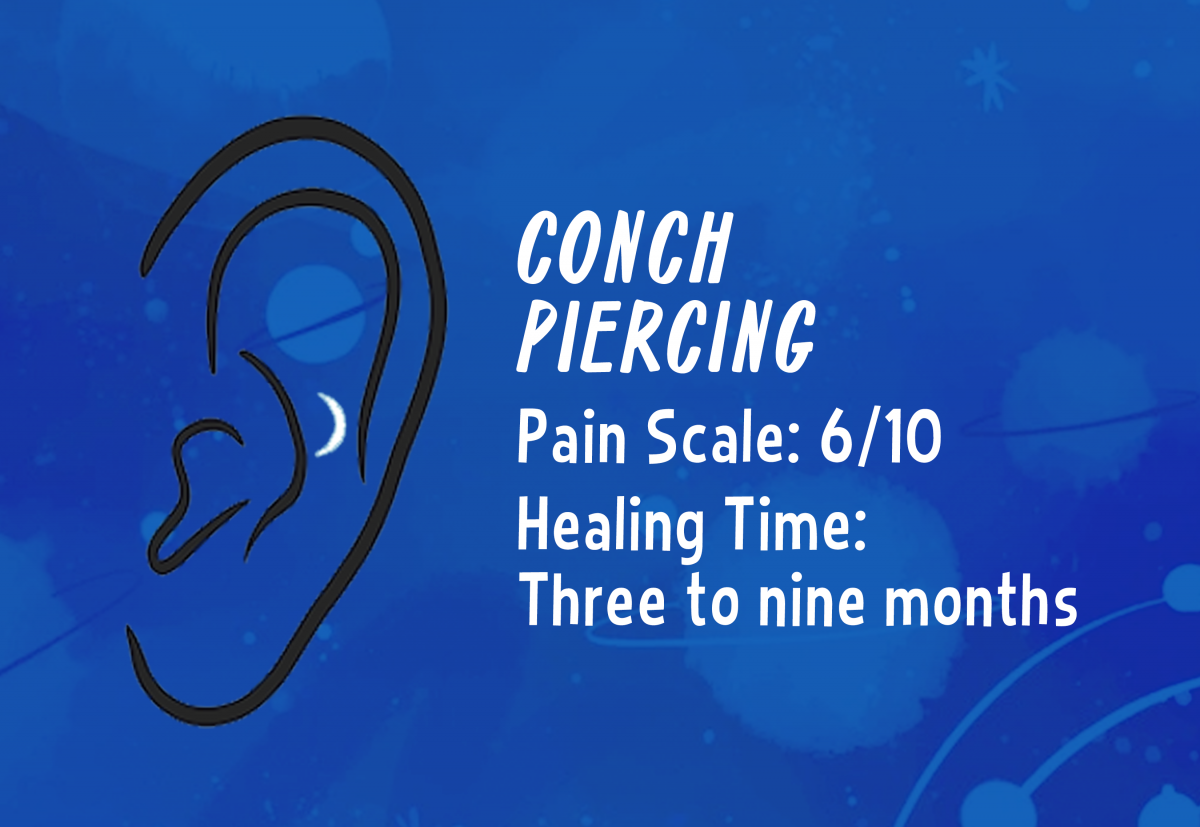

Bold yet wearable, conch piercings have hardly gone out of style since they were first introduced. As the name suggests, this type of cartilage piercing is done on the center part of the inner ear. This placement provides the most amount of space so you can really have fun with the type of jewelry to use. You also have the option of choosing between an inner or outer conch piercing. Most inner conch piercings use stud earrings, while outer ones are best for hoop earrings.
Pain Scale: 6/10 | Healing Time: Three to nine months
9. Rook Piercing
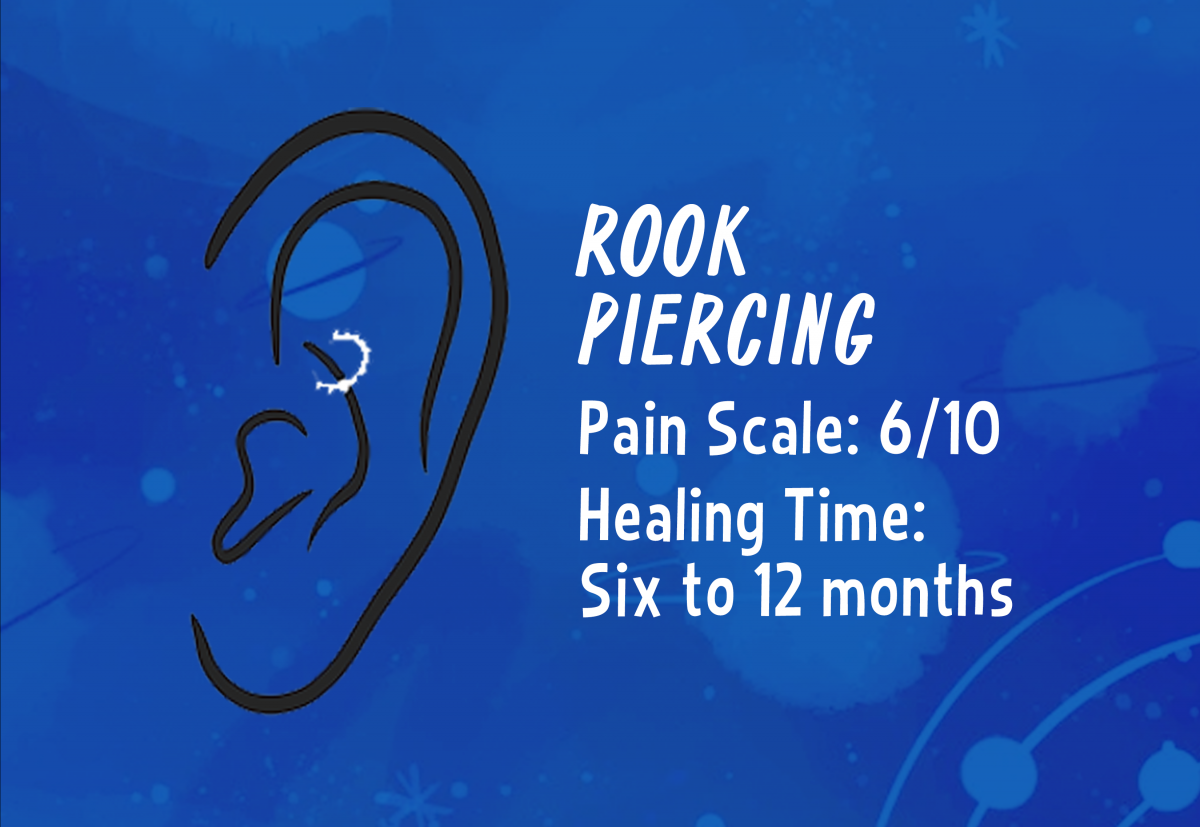

Another popular type of cartilage piercing is the rook. It is located above the tragus, in the antihelix. To make this piercing, the piercer uses a hollow needle that will go through the ear cartilage where they would insert your chosen earring. Placement on the cartilage of your rook may vary depending on the anatomy of your ear. A professional piercer will choose what would best compliment the shape of your ear and work with any existing piercings that you have. Note that these types of ear piercings, ones done in the cartilage, tend to have a higher risk of infection. Make sure you consult with your piercer well before going through with it.
Pain Scale: 6/10 | Healing Time: Six to 12 months
10. Orbital Piercing


Orbital piercings are quite similar to industrial ones in that they are made up of two connected piercings. However, instead of being connected by a bar an orbital uses a ring or a hoop. This then creates the illusion that the earring is floating or “orbiting” the ear, which is where it got its name from. Orbital piercings also come in different styles, depending on its placement. Typical piercings styles used for orbitals include inner conches, helixes, and rooks.
Pain Scale: 4 to 5/10 | Healing Time: Eight to ten weeks
11. Forward Helix Piercing
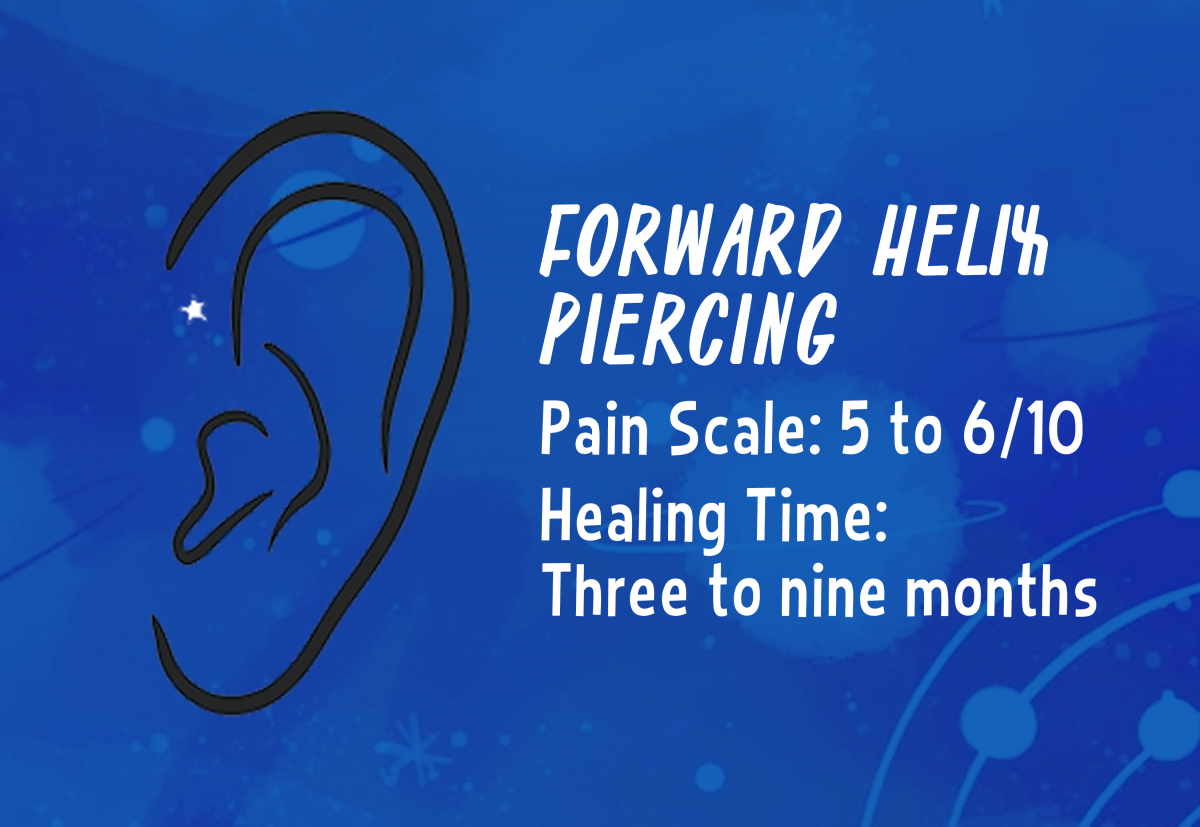
If you’re looking for a customizable type of ear piercing, the forward helix piercing is a great option to try. This is typically done on the outer cartilage, located closest to the face and right above the tragus. While most people get it done on the upper part of the cartilage, the placement can change according to the anatomy of your ear. Consultation is also important for this piercing so you can get the location right and customize it according to your style. Because this is a fairly complicated piercing, make sure you go to professional piercing shops to get it done.
Pain Scale: 5 to 6/10 | Three to nine months
12. Flat Piercing
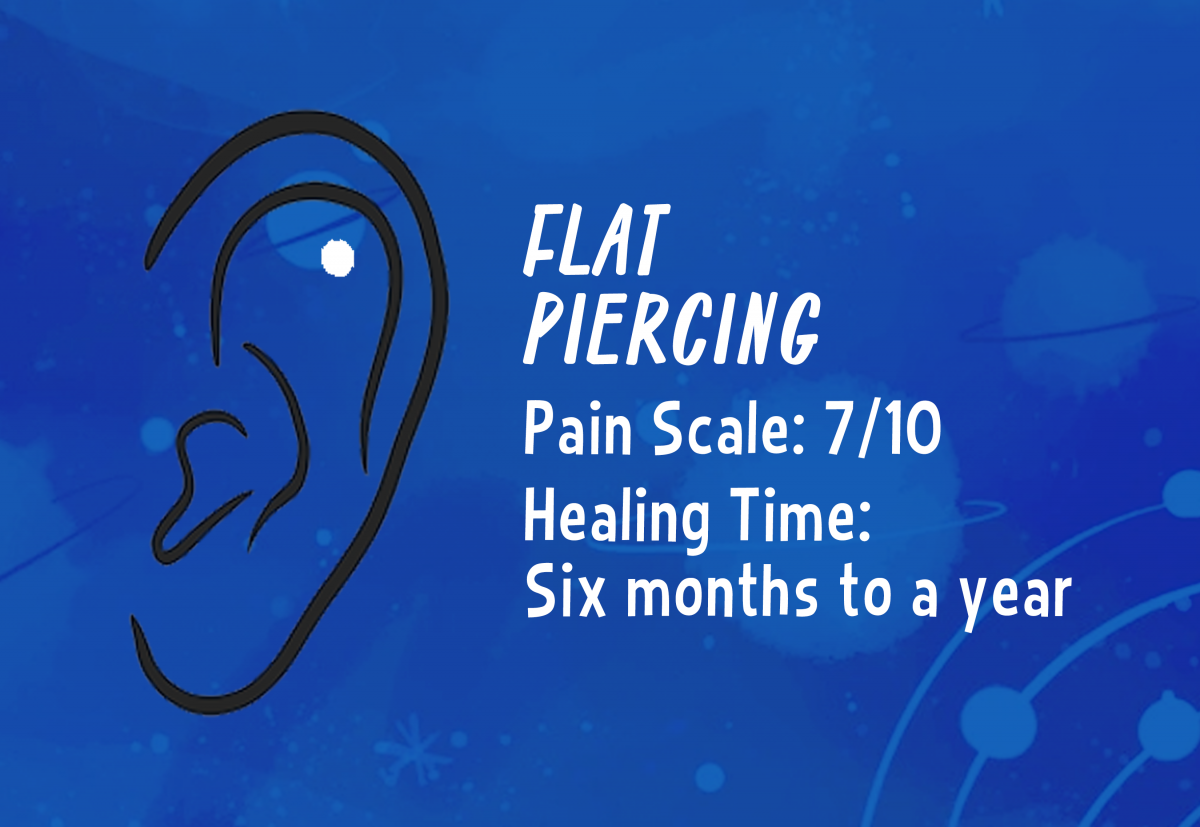

A flat piercing is named as such because of its position in the flat area of the upper ear’s cartilage. Not to be mistaken for an industrial or helix piercing, which is located in the rim of the ear. Flat piercings are typically done in combination with other types of ear piercings, creating what is known as a constellation. Because of its placement, studs are the most common type of earrings used for a flat piercing. It is also quite customizable and you can have one or more flat piercings in the same area. If you’re looking for ear piercings for men, this is also a popular style.
Pain Scale: 7/10 | Healing Time: Six months to a year
13. Anti tragus Piercing
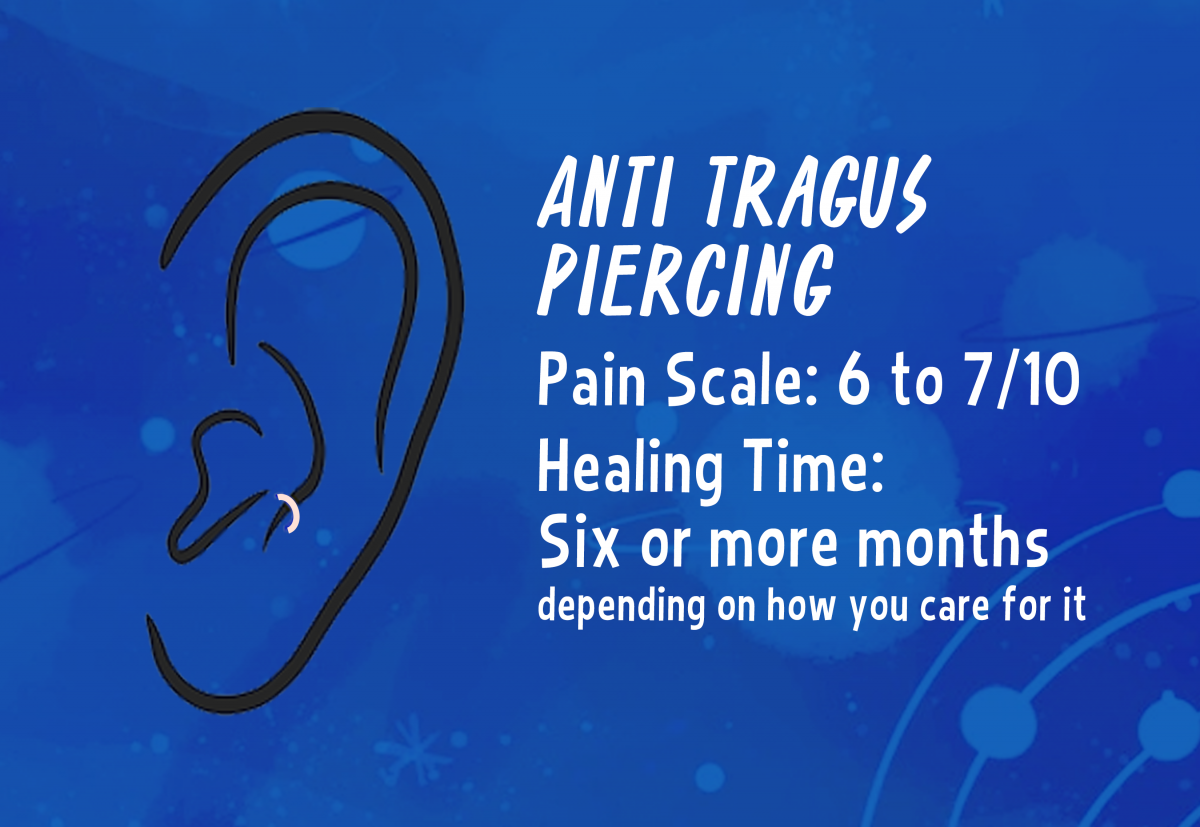

The anti-tragus is a cartilaginous ridge located right above the earlobe. This small, curved piece of cartilage is another great area to get pierced in given the amount of space available. The earring would pierce through the small piece of cartilage and is placed next to the tragus. Unlike flat piercings, however, the most common type of jewelry used for this piercing is a stainless steel curved barbell or a ball closure ring. Some people prefer hoop earrings, though opt for a smaller one so it doesn’t overwhelm the rest of your accessories. We suggest consulting with a professional piercer, especially if you plan on adding to your collection of piercings later on.
Pain Scale: 6 to 7/10 | Healing Time: Six or more months, depending on how you care for it
14. Double or Triple Ear Piercing
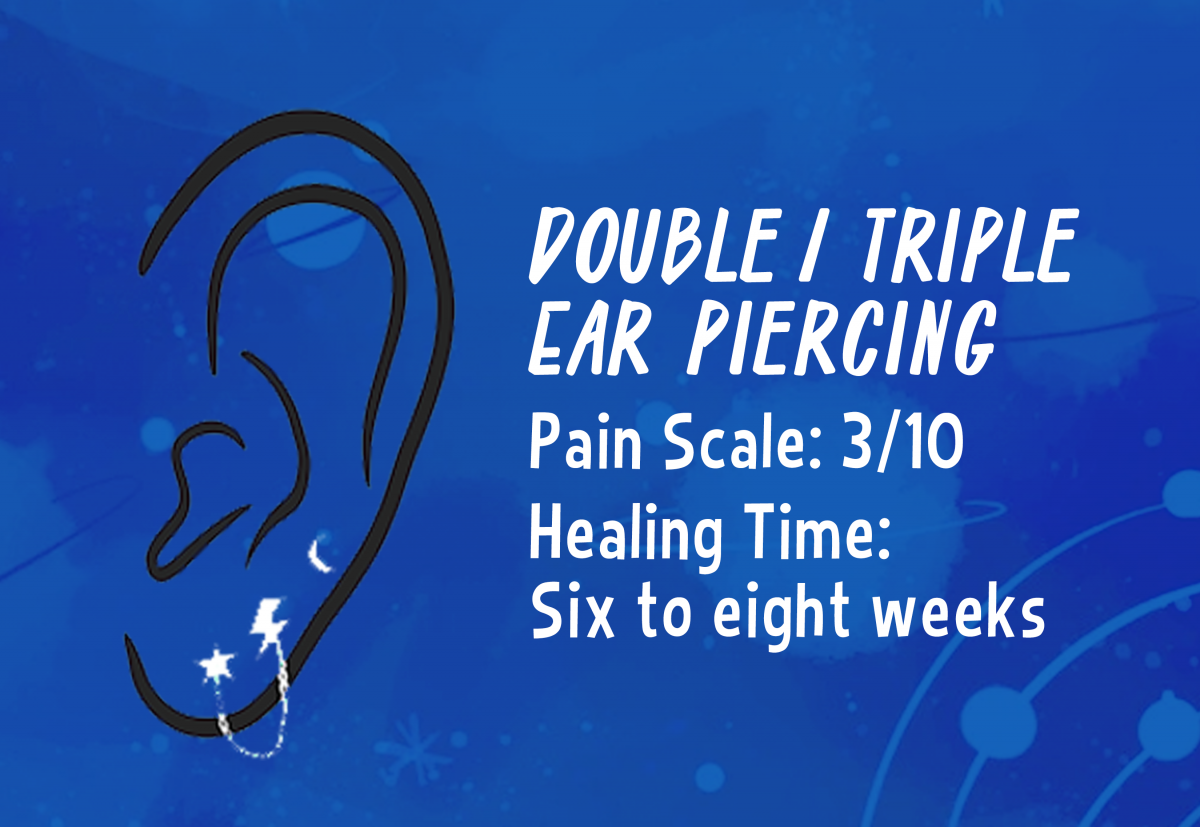

As the name suggests, a double ear piercing is two pairs of piercings placed right next to each other on the lower earlobe. The fun thing about getting double ear piercings is that you can customize it according to your style. For example, you can alter the distance between each piercing. You can leave a big gap to make room for bigger jewelry. Aside from double piercings, you can also opt for three or more. With constellation piercings becoming a bigger trend, having multiple piercings will allow you to layer your earrings better, too.
Pain Scale: 3/10 | Healing Time: Six to eight weeks
15. Auricle Piercing
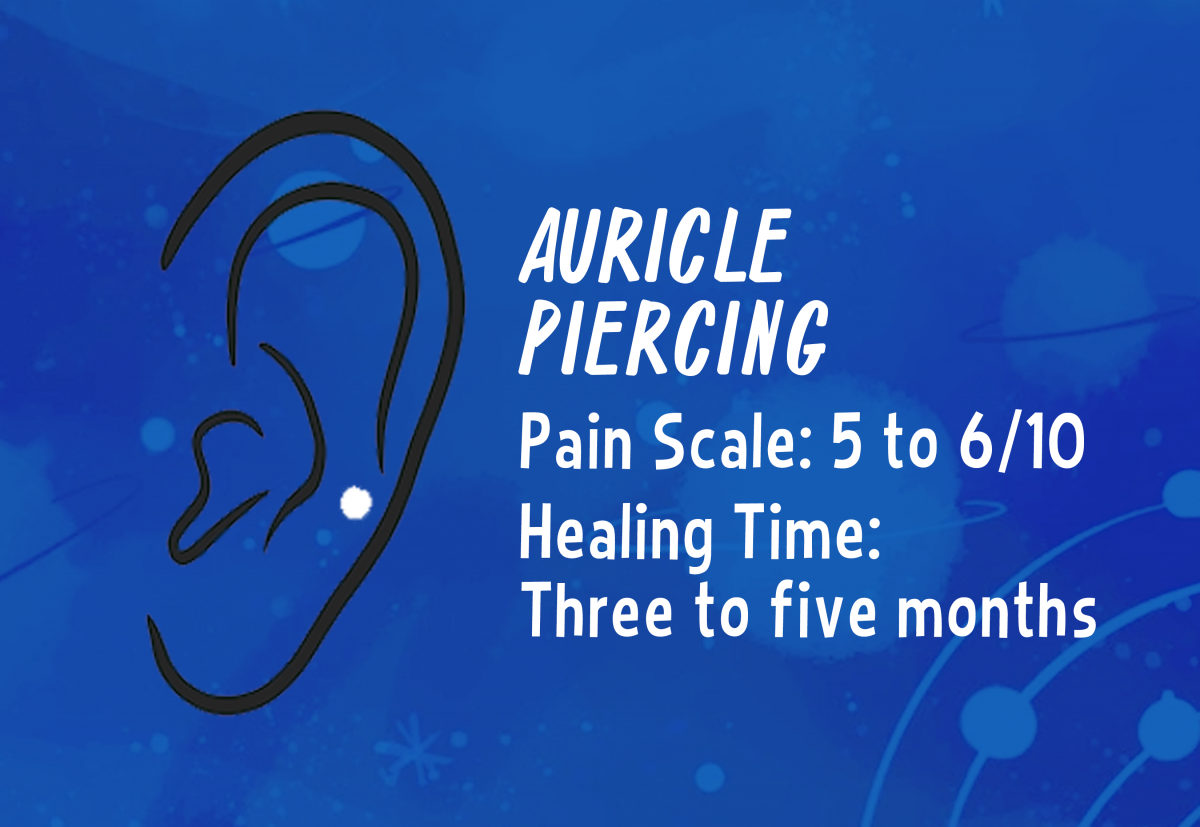

The auricle is the area between your helix and earlobe. This is the C-shape part of the ear and is still part of the cartilage. Most auricle piercings are located directly across the tragus, which is also why most people get these two types of ear piercings done as a pair. If this is your first time getting a cartilage piercing, this is a simple and not-too-scary first step. The pain is quite minimal and because it isn’t a very complicated piercing, the process is also quicker than others. Auricle piercings are also a popular choice for men’s ear piercings given their subtlety.
Pain Scale: 5 to 6/10 | Healing Time: Three to five months
Different Types of Ear Piercings – What is a Constellation Piercing?
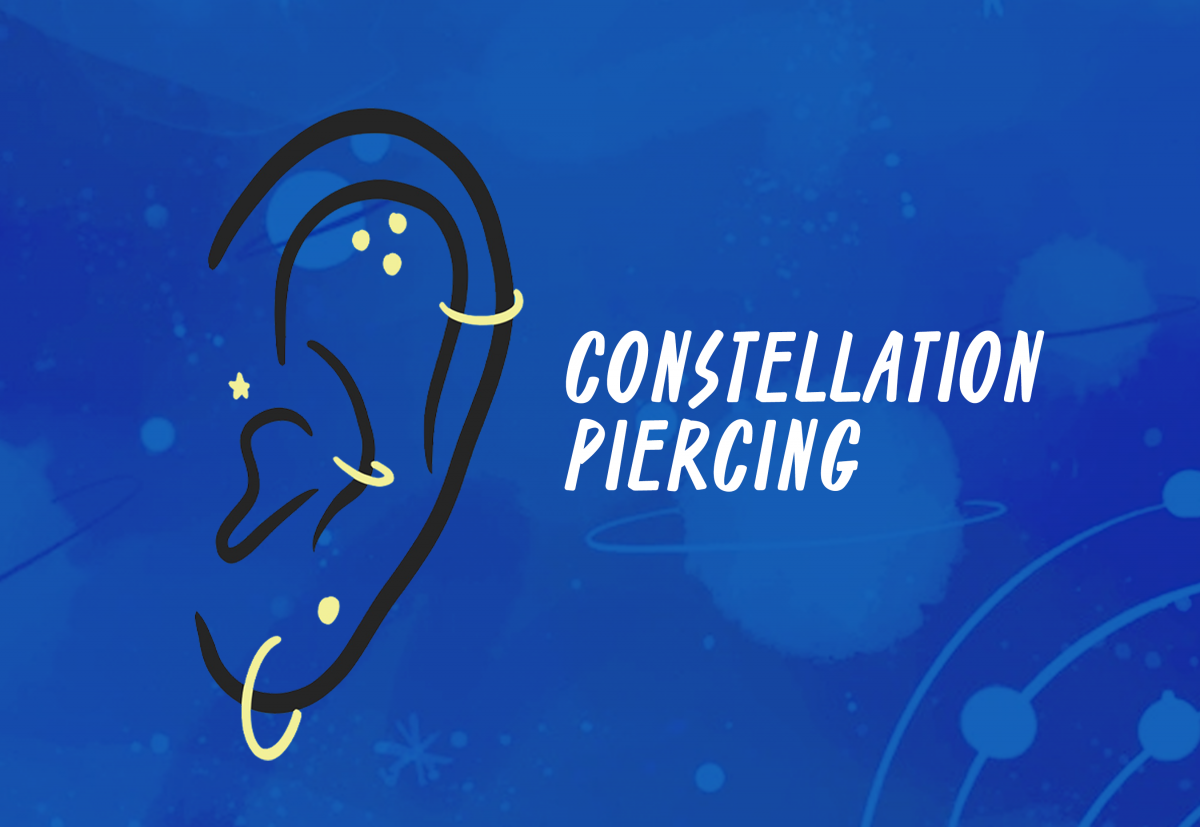

Some people collect scrapbooks for memories, others choose tattoos, and there are those who opt to get different ear piercings. As the name suggests constellation piercings are a collection of piercings located along the earlobe. This type of piercing is typically planned ahead, with each piercing arranged to follow a specific look or style of jewelry. This is why in some cases when the type of earring used for a constellation piercing is changed significantly, it can also make everything appear messy or uncoordinated.
Also called “curated ear-piercing” it is imperative that you do your research and work with your piercer if you’re getting this done. To make every arrangement look great, it takes skill and time investment. After all, you cannot get all of these piercings at the exact same time. In fact, most constellation piercings might take a couple of years to complete so you cannot rush the process. If you already have piercings, talk to your piercer about incorporating new ones to create a specific design that suits you best.
Ear Piercing Chart


Considering your pain tolerance is also important when getting your ears pierced. The pain scale guide can help you know which type of piercing is most painful and which one is most tolerable.
Guide to Ear Piercings: How to Clean Ear Piercings
Regardless of the types of ear piercings you get, knowing how to take care of them and clean it will help you avoid issues such as infections. This is especially true if you’re getting cartilage earrings, which typically take longer. The first important step to avoiding complications with your ear piercings is choosing a licensed professional piercer. Make sure you do your research about them, too, and read any available reviews about their work. Avoid places that use ear-piercing guns as this piece of equipment is both unhygienic and damaging to your ear. Of course, make sure they are using the proper jewelry as well. Stainless steel is the most common one as it tends to be hypo-allergenic.
After getting your piercings done successfully, here’s how you can keep it clean at home:
- Make sure your hands have been cleaned and sanitized before touching any part of your piercing.
- What to clean ear piercings with? You can use a saline solution or a fragrance-free antimicrobial soap. You can also use both twice a day. Make sure you rinse off any soap residue left in the jewelry as well
- Dry your piercing with a clean paper towel or tissue. Do avoid using a fabric towel or any type of cloth as this poses a risk of your jewelry getting snagged. Make sure you do this step as carefully as possible, especially with fresh piercings as these can be sensitive.
During the healing period of your piercing, do steer clear of the following:
- Touching or scratching the piercing when it gets itchy. Make sure you sanitize your hands with rubbing alcohol if you need to touch them.
- Contact with any bodily fluid.
- Diving into open water such as rivers, lakes, hot tubs, and pools. Bacteria might get into your piercing and cause infections. Some professional piercers also recommend showers over bathtubs, though you can do the latter as long as your ears don’t get wet.
- Makeup and skincare items such as lotions and sprays.
- Antibacterial ointments can actually prevent air from getting to your piercing. Like wounds, airing it out is needed to help it heal and dry up.
How to Sleep with a Piercing
One of the first things you need to do is put your pillow into a clean shirt. Switch up the side you sleep on daily and change after every couple of days. Doing this gives you a clean surface to rest your piercing on. Of course, make sure the fabric isn’t the type that would snag. If you only got a piercing in one ear, avoid sleeping on the side you got it on.
Choosing the Right Types of Ear Piercings Can Give You a Style Boost
If you want a style upgrade without adding to your wardrobe then getting the right types of ear piercings is a great alternative. You can go for something minimalist or opt for something bold, such as seen in constellation piercings. Whichever you choose, it is important to have a good understanding of what it entails before getting it done. The last thing you want is to regret your decision just because you didn’t do enough research. We hope our guide to ear piercings helped you choose the right style for yourself so you’re better prepared for your piercing appointment.
Aside from piercings, tattoos are another popular form of body modification many people use for self-expression. If you’re interested in them, here are 50 unique tattoo designs that might inspire your next piece.

